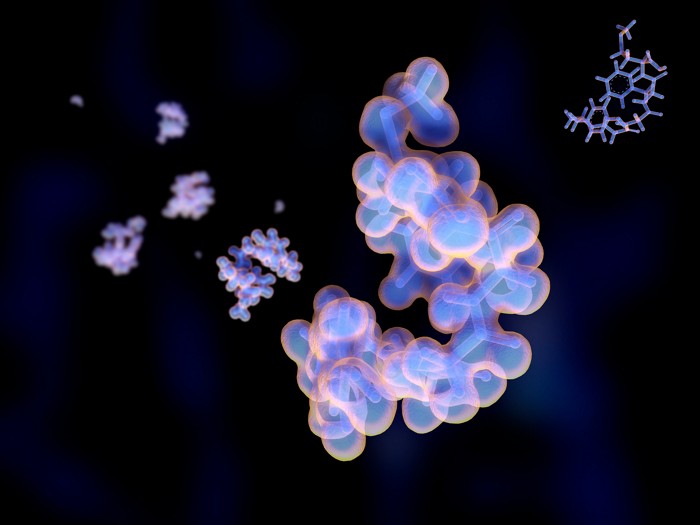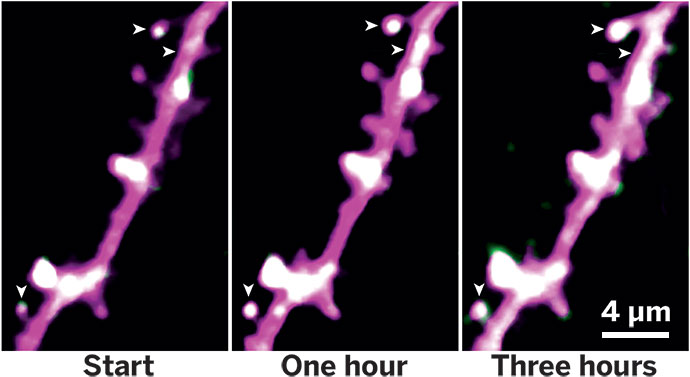Advertisement
Grab your lab coat. Let's get started
Welcome!
Welcome!
Create an account below to get 6 C&EN articles per month, receive newsletters and more - all free.
It seems this is your first time logging in online. Please enter the following information to continue.
As an ACS member you automatically get access to this site. All we need is few more details to create your reading experience.
Not you? Sign in with a different account.
Not you? Sign in with a different account.
ERROR 1
ERROR 1
ERROR 2
ERROR 2
ERROR 2
ERROR 2
ERROR 2
Password and Confirm password must match.
If you have an ACS member number, please enter it here so we can link this account to your membership. (optional)
ERROR 2
ACS values your privacy. By submitting your information, you are gaining access to C&EN and subscribing to our weekly newsletter. We use the information you provide to make your reading experience better, and we will never sell your data to third party members.
Neuroscience
Neuroscientists develop fluorescent sensors for numerous peptide signal molecules
New tools can detect many of these enigmatic molecules in behaving brains
by Laurel Oldach
November 23, 2023
| A version of this story appeared in
Volume 101, Issue 39

Neuroscientists have gotten pretty good at using light to understand the brain. There are fluorescent reagents to fill and trace neurons, pinpoint a molecule’s location within a cell, and light up as cellular chemistry changes. But one class of signaling molecule that has remained elusive is neuropeptides—short molecules, cleaved from long precursor proteins, that can send signals between neurons at short or long range.
Now, in a study published inScience, a team of scientists in China and the US report a generalizable way to track the release of numerous neuropeptides and showcase the technique in living mice (2023, DOI: 10.1126/science.abq8173) .
The more than 100 known neuropeptides in the human brain sometimes act at synapses, points of contact between neurons. But they also often diffuse between neurons that are not in contact, which means it’s difficult to make predictions about neuropeptides’ activity based on anatomy alone.
“Compared to studying synaptic mechanisms of neuronal communication, we are years behind in terms of understanding neuropeptide signaling,” says Tina Kim, a neuroscientist at the University of California, Davis, who calls the study a landmark.
Researchers had previously developed fluorescent sensors for a few neuropeptides, including oxytocin and orexin. The probes are proteins based on neuropeptide receptors. Researchers insert a split fluorescent protein between two receptor domains; when the receptor binds its ligand, a shift in its structure rearranges the fluorescent protein and allows it to light up. To produce a significant change in brightness, past sensor development projects had to generate and test hundreds of variants.
In the new work, researchers in Yulong Li’s lab at Peking University engineered sensor modules that could work for numerous neuropeptide receptors and therefore detect many neuropeptides. Li says in an email, “We achieved ‘plug and play’ to generate sensors.”
The authors optimized 11 probes and put them through a battery of tests to confirm that each is specific for its target neuropeptide, has nanomolar sensitivity, and does not interfere with cell signaling.
The new probes gave them an unprecedented ability to observe neuropeptide release from single cells in less than a second. In one set of experiments in the paper, researchers working in Jiang-Ning Zhou’s lab at the University of Science and Technology of China studied how a stressful experience, such as a mild shock or being placed on a moving treadmill, prompts the release of a stress-related neuropeptide in live mice. According to Zhou, this was the first time anyone had looked so closely at the neuropeptide’s activity in a living brain; the greater detail will help researchers investigate how stress responses may contribute to depression.
The University of Texas at Dallas neuroscientist Zhenpeng Qin, who was not involved in the study, says the new set of tools “will benefit the community of biology and neuroscience a lot” by enabling researchers to study precisely what prompts neuropeptide release, how much the molecules diffuse through the brain, and how their activity changes in various diseases.





Join the conversation
Contact the reporter
Submit a Letter to the Editor for publication
Engage with us on Twitter